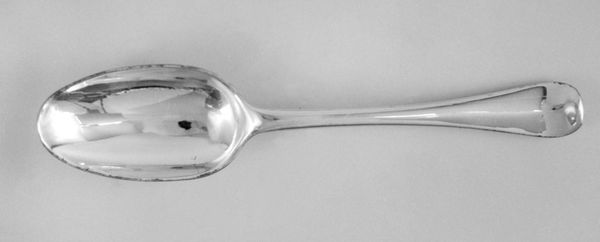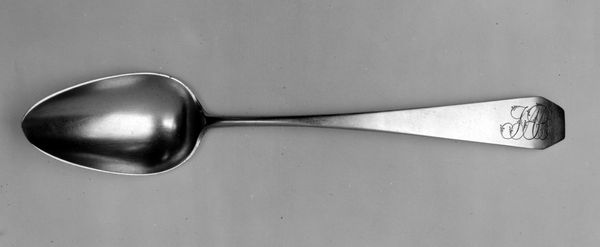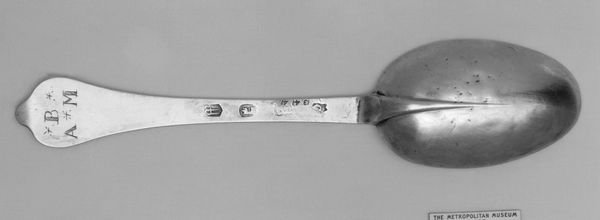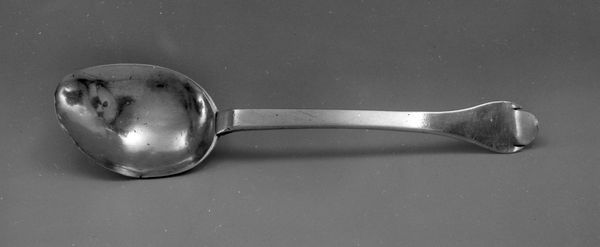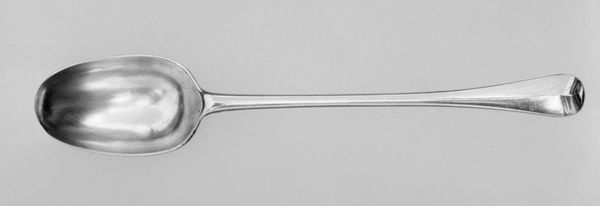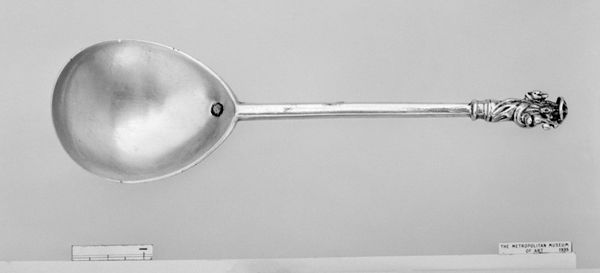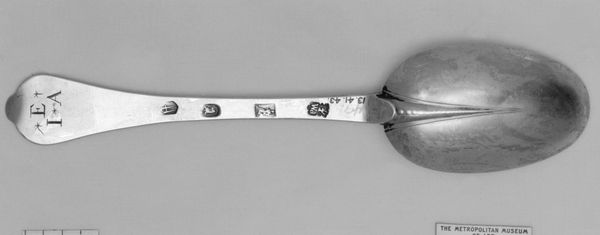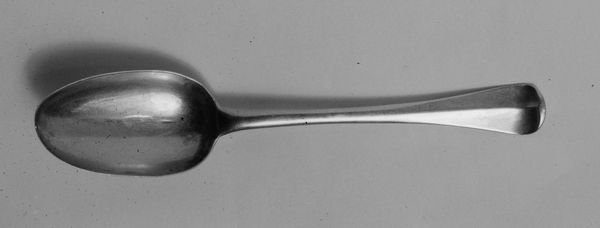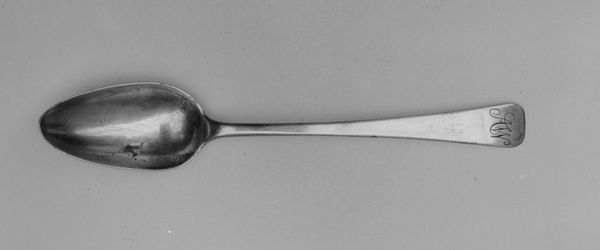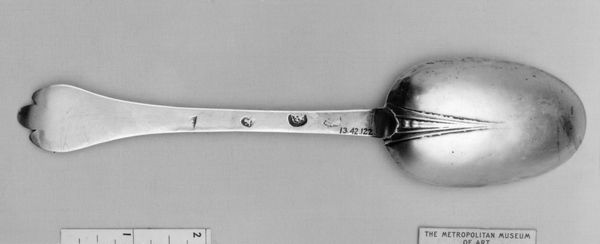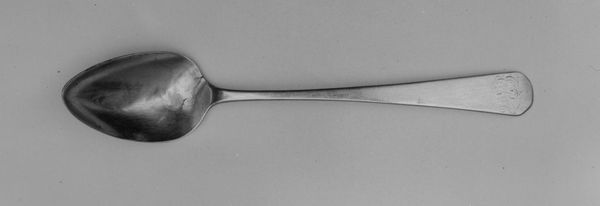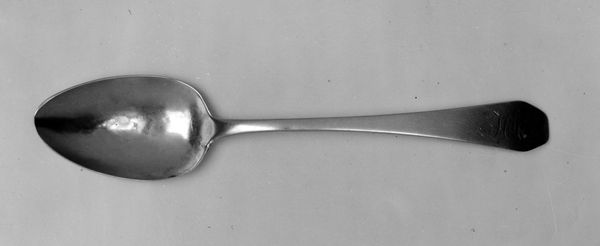
silver, sculpture
#
silver
#
sculpture
#
sculpture
#
decorative-art
Dimensions: Length: 7 3/8 in. (18.7 cm)
Copyright: Public Domain
Curator: So, here we have Thomas Issod's "Spoon," crafted between 1695 and 1696. What do you think, first impressions? Editor: Strikingly austere. It's this muted elegance, all in monochrome silver, a real contrast between form and function. Almost somber. Curator: Indeed. And, being silver, the spoon itself signifies more than just its practical use; it speaks to wealth, status, the socio-economic fabric of the late 17th century, no? Editor: Precisely! A spoon transcends utility, especially one in precious metal. Consider the symbolism during this period: food scarcity juxtaposed with opulent displays like this piece. How does an object like this become entangled with colonial economies and power dynamics, and, let's be frank, with inequality? Curator: That’s quite right. I'm also thinking about the form itself – the elongated handle leading to the teardrop bowl. There is also this sort of, quirky detail on the other end that breaks the harmony ever so slightly! Editor: Definitely not just functional, but a clear statement of artistry meant to adorn, to impress! What does access to this art signify about inclusion and exclusion, not just then but also now? Curator: A poignant thought! One could argue its survival alone speaks to resilience, doesn't it? Surviving across centuries, wars, social upheavals... like a silver seed. Editor: Yes, surviving perhaps to question us, provoke us, and ask what aspects of human society are worth holding on to and celebrating? Curator: Right, I see your point. Thank you! Editor: Anytime. Let's spoon-feed some more radical perspectives into the history of art next time!
Comments
No comments
Be the first to comment and join the conversation on the ultimate creative platform.


